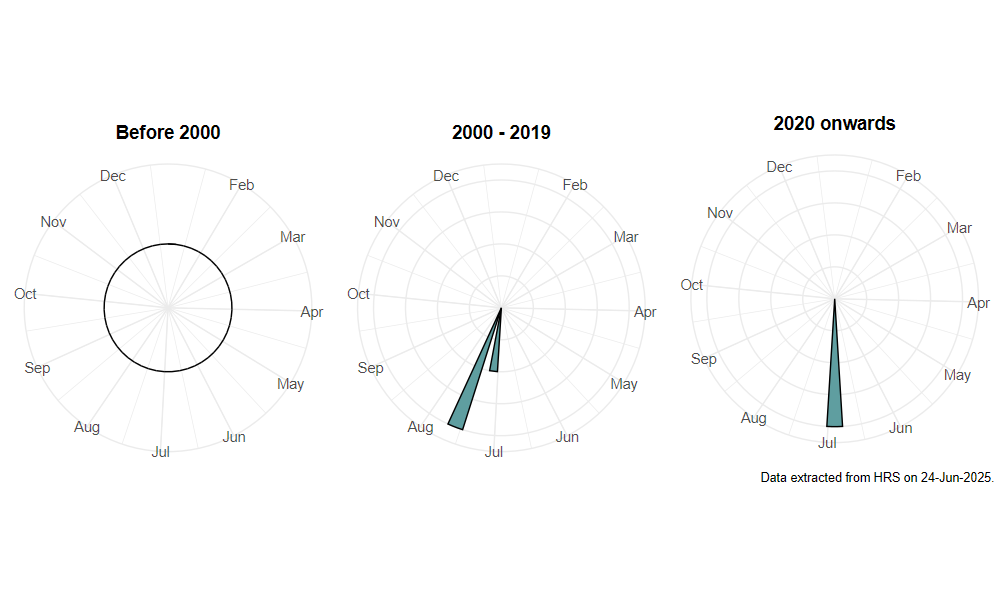Scaeva dignota (Rondani, 1857)
Identification
Identification difficulty = 4. ![]()
![]() according to Ball & Morris, 20241
according to Ball & Morris, 20241
Biology
The larvae are aphidophagous and are reported from fruit trees and from elder. Adults are reported from a variety of scrubby environments and from urban areas, and are known to visit yellow composites.
Flight period
The following plots show the number of unique records per week excluding those reported to be of immature stages.

Status
Probably a vagrant to the British Isles.
Distribution
It is currently only known from a single specimen from the Isle of Wight.

-
Ball, S., & Morris, R. (2024). Hoverflies of Britain and Ireland. WILDGuides (3rd ed.). Oxford: Princeton University Press. ↩